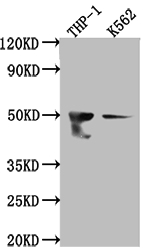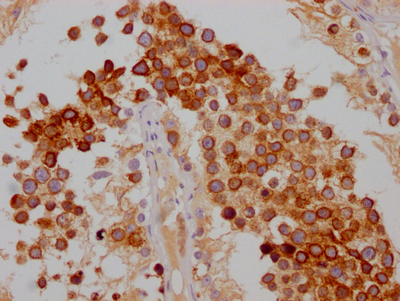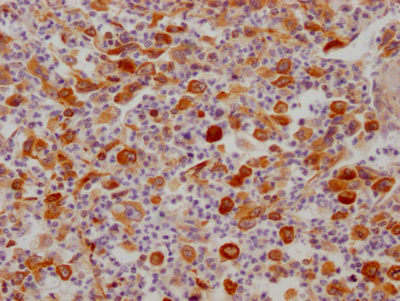The development of the FDFT1 recombinant monoclonal antibody involves four steps: first, sequencing the FDFT1 monoclonal antibody gene, then cloning the gene into a plasmid vector, followed by the transfection of the recombinant vector into a host cell line, and final purification of the FDFT1 recombinant monoclonal antibody from the cell culture supernatant using affinity chromatography. The FDFT1 monoclonal antibody is derived from FDFT1 antibody-producing hybridomas, with a synthesized peptide derived from human FDFT1 used as the immunogen. This FDFT1 recombinant monoclonal antibody is highly recommended for use in ELISA, WB, and IHC applications for the detection of human FDFT1 protein.
The FDFT1 protein, also known as squalene synthase, plays a key role in cholesterol biosynthesis in cells. Specifically, FDFT1 catalyzes the synthesis of squalene from farnesyl pyrophosphate and is the first committed step in the cholesterol biosynthesis pathway. Squalene is then converted into cholesterol through a series of enzymatic reactions. FDFT1 is primarily found in the endoplasmic reticulum of cells and is highly expressed in liver and steroidogenic tissues. In addition to its role in cholesterol biosynthesis, FDFT1 has also been implicated in the regulation of cell proliferation and survival.








